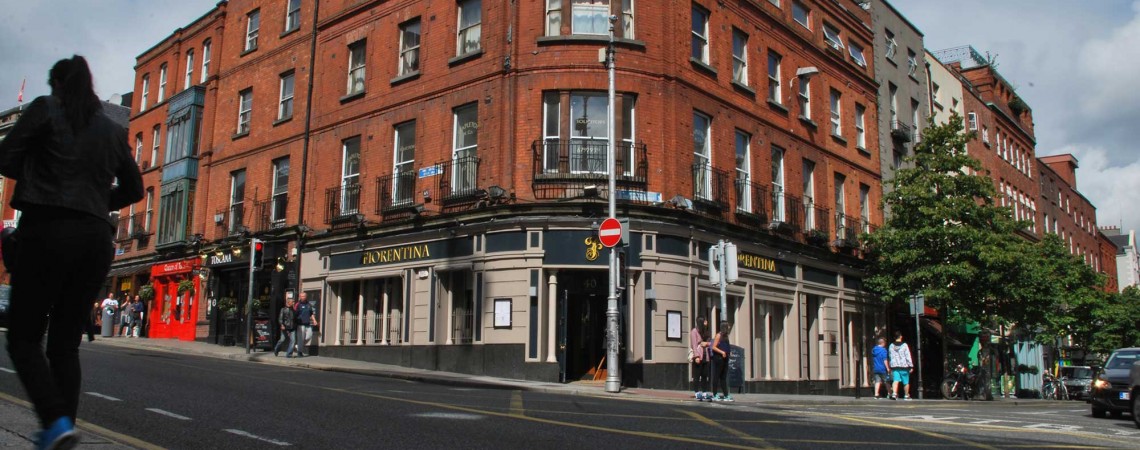Blog
Property Ireland 2018: House price rises slow dramatically in Dublin
HOUSE prices nationally rose by 5.5pc – or €1,000 a month – during 2018, but the level of price increase in Dublin fell dramatically when compared with a year earlier.
In Dublin, prices rose by 2.9pc during 2018, compared to an increase of 11.7pc in 2017. The cooling of the Dublin market is being put down to an increased availability of new homes, and will offer some encouragement to potential purchasers after years of double-digit growth in the capital.
In the other cities, however, inflation in housing prices in 2018 was comparable to 2017. Prices in Cork rose by 5.8pc in 2018, compared to 5.1pc in 2017, while in Galway city, prices rose by 6.3pc compared to 8.1pc a year earlier. Inflation in Waterford city held steady at 8.6pc, while in Limerick inflation picked up – increases of 9.8pc in 2018 versus 6.9pc in 2017.
The figures are contained in the latest House Price Report from the property website, daft.ie.
The author, economist Ronan Lyons, pointed to a significant growth in the number of homes for sale in Dublin as a major change from a year earler.
“Perhaps the most notable trend in the sales market right now is the extraordinary growth in availability of homes for sale, especially in Dublin (where construction is concentrated). Two years ago, at the end of 2016, there were fewer than 2,800 homes for sale in the Dublin market. Now, in December 2018, there are over 4,800,” he said.
There were over 23,500 properties for sale in December 2018, compared to 21,200 a year earlier. This is the first year-end increase in availability in a decade, he said.
“This trend of greater availability has started to spread, too. In Leinster (outside Dublin), availability is up from 5,000 a year ago to 6,000 today. Elsewhere in the country, the picture is more about stabilisation after many years of dwindling stock. This is a world away from the rental sector, where availability is at record and continues to worsen,” Mr Lyons added.
“Unsurprisingly, with greater supply, the bargaining power of buyers improves and prices increases have slowed down. The annual rate of inflation in list prices for Dublin in 2018 was 2.9pc, down from 11.7pc a year ago. Outside Dublin, as you might guess from stable rather than improving supply, inflation has levelled off rather than cooled: increases of 7.3pc in 2018 compared to 7.4pc in 2017.
The average price nationwide in the final quarter of the year was €254,000, down 1.1pc on the figure for the third quarter. The annual increase of 5.5pc or just over €1,000 a month, was significantly smaller than increases of between 8pc and 9pc seen in 2015, 2016 and 2017 and marks the lowest year-end inflation rate since prices bottomed out in 2013.
Mr Lyons added: “During the 2000s bubble and crash, the laws of supply and demand were secondary in the housing market to credit market shocks.
“Not least because of the Central Bank’s mortgage rules, the market this decade has returned to the more fundamental drivers of supply and demand. Since 2013, demand has been strong but supply weak.
“The increase in homes being built – especially estate houses – in the last 18 months, though, has helped cool down inflation, in particular in the Greater Dublin area, where construction activity is focused. The hope for the housing system is that the building of new homes continues to increase, and to spread to other urban areas.”
However, while there may be hope of relief for buyers, there is no indication that the rental market price rises are set to ease off.
“2018 was the year that sales and rental segments detached. For roughly five years, there had been a common trend of acute supply shortages that characterised both segments. That has given way in the sales market to one of steadily improving supply, relieving the upward pressure on prices,” Mr Lyons said.
“And more is to come. Suppose, on average, it takes 18 months to go from planning permissions to occupied units on new housing estates. The 8,500 or so units planned in the year to mid-2017 became the new homes completed during 2018. Over 2019 and 2020, we are likely to see that number rise well above 10,000 new estate homes completed in a year. The focus will switch, in the sales segment, from supply shortages to the capacity of the mortgage market to process the new homeowners.
“Unfortunately, no such relief is coming down the tracks in the rental segment – or indeed the third main component of the housing system, social housing. In both of those segments, the system needs to increase at least by a factor of ten. That won’t happen on its own and thus it is those two segments where policymakers need to focus now.”
Average list price and year-on-year change – major cities, Q4 2018
Dublin City: €370,472 – up 2.9pc
Cork City: €275,703 – up 5.8pc
Galway City: €290,528 – up 6.3pc
Limerick City: €194,214 – up 9.8pc
Waterford City: €174,879 – up 8.6pc

